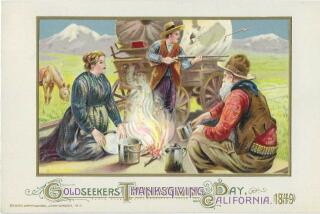GARDENING : Feasting on Thanksgiving History
The Pilgrims who sat down to the first Thanksgiving feast in 1621 were thankful for a good harvest, which would have been impossible without the help of the Indians.
Many of the plants cultivated by the Indians and introduced to the Colonists remain popular in our gardens today.
The holiday foods we make from these plants--steaming corn and pumpkin puddings and tangy cranberry sauce--are much the same as those that stocked the Thanksgiving table centuries ago.
The winter following the first Thanksgiving, Pilgrims supplemented their winter larder with corn bought from the Indians. In contrast to the corn grown by the Pilgrims, we now grow sweet corn in our gardens, a corn not meant for winter storage, but rather for fresh “green” eating. Sweet corn could not have showed up at those early Thanksgiving dinners, for it was first introduced to white settlers in 1779 by the Susquehanna Indians.
A steaming pumpkin pie may have graced the first Thanksgiving table, just as it does today. Pumpkins and their relatives, squashes, were important because they are nutritious and can be stored into the winter.
The Indians taught the colonists to plant pumpkins and squashes between corn plants to shade out weeds.
The Pilgrims called squashes and pumpkins “pompions,” a word derived from the French word puopon, meaning melon or squash. The British still call any big winter squash a pumpkin.
There is some logic in lumping the two together with one word because pumpkins are the same botanical species as acorn and summer squashes.
Acorn squash may have been the pompion cooked up for the 1621 feast, but nowadays, any winter squash might be used, or even a sweet potato. Our word “squash” is a shortened form of the original Indian word askutasquash.
Jerusalem artichoke (Helianthus tuberosum) is another plant that provided food for early Thanksgiving feasts. The plant is not from Jerusalem and is not an artichoke.
“Jerusalem” comes from the Italian name for the plant, girasole, meaning “follows the sun,” which the flowers do. It is easier to say “Jerusalem artichoke” than the Indian name Kaischuchpenauk, meaning sun and roots.
Expected of a plant that grows wild throughout the eastern United States, Jerusalem artichokes are easy to grow. Today, many gardeners plant Jerusalem artichoke, but outside their vegetable gardens, where the plant can express its weedy habit.
Cranberry, spicing up holiday dinners now just as it did during that first Thanksgiving, is one of the few native American fruits that has made its way to today’s supermarket shelves. However, this fruit is more of a challenge to grow than most other plants, unless you have an acidic bog in your yard.
By some accounts, groundnut (Apios tuberosum) was the food most responsible for helping Pilgrims survive their first few winters. The “nuts,” tasty boiled or roasted, grow underground like a string of small potatoes.
Only in recent years have a few gardeners become interested in bringing this plant from the wild to the garden.
At that first Thanksgiving, Gov. Bradford showed his gratitude to the Indians by inviting Pawtucket Indian Chief Massosoit to share in the feast.
When the chief showed up with 90 of his buddies, there was some concern as to whether enough food had been prepared.
This concern was allayed when the chief’s brother opened up a deerskin sack filled with popcorn, another food new to the Pilgrims.






